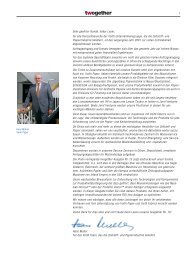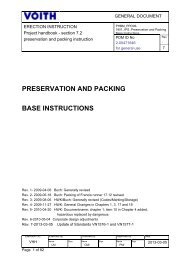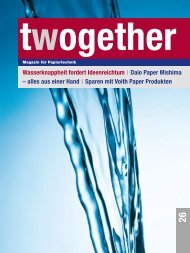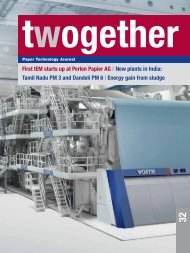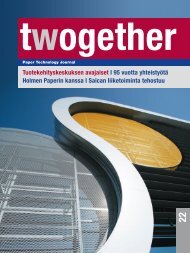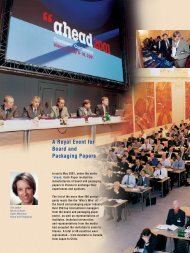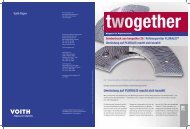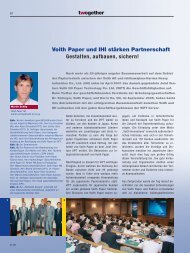You also want an ePaper? Increase the reach of your titles
YUMPU automatically turns print PDFs into web optimized ePapers that Google loves.
than 5% organic content. In Austria this<br />
ruling has been effective since 01.01.<br />
2004.<br />
The “export” of rejects for disposal in<br />
countries with lower standards involves<br />
tremendous transport costs, and is only<br />
possible to a very small extent because<br />
of regulations on waste shipment. As a<br />
result, rejects from recycled fiber operations<br />
must generally be incinerated and<br />
only the combustion residues can be<br />
landfilled.<br />
What are the consequences of incineration?<br />
The rejects have to meet certain<br />
quality requirements. What at first seems<br />
to be a paradox is going to become a<br />
major design criterion for recycled fiber<br />
plants:<br />
● Inspection of the incoming raw<br />
material will become more and more<br />
important<br />
● With baled material the dewiring<br />
efficiency will influence the required<br />
technology for rejects handling<br />
Fiber Systems<br />
Fig. 1: Automatic container loading station.<br />
Fig. 2: Lightweight coarse rejects after<br />
compacting.<br />
Fig. 3: Heavyweight fine rejects from the<br />
cleaners.<br />
2 3<br />
● Removal of incombustible, inert<br />
material such as metal, glass or sand<br />
from the rejects is essential<br />
● The metal fraction should be as clean<br />
as possible to facilitate its recycling,<br />
instead of disposal<br />
● Rejects dry content has a decisive<br />
influence on suitability for incineration<br />
and on the transport costs involved.<br />
The main objective is still to get rid of the<br />
rejects. Immediately, wherever and whenever<br />
they arise.<br />
What exactly are rejects composed of?<br />
First of all, there is a basic difference between<br />
rejects and sludge. Sludge is homogeneous,<br />
like for instance the residue<br />
from deinking cells, from micro-flotation<br />
or from primary clarification.<br />
Rejects, however are not homogeneous.<br />
They consist of coarse and fine rejects.<br />
Coarse rejects are found in pulping and<br />
coarse screening, fine rejects in the subsequent<br />
process stages of cleaning and<br />
fine screening as well as in the approach<br />
flow system.<br />
11<br />
Heavy coarse rejects are all kinds of metal<br />
of different shapes and sizes, stones,<br />
wet strength waste paper that has not<br />
disintegrated, wires etc.<br />
Light coarse rejects (Fig. 2) consist of<br />
bits of plastic, plastic foils, CDs, etc.<br />
The composition of the coarse rejects depends<br />
mainly on the type of pulping system:<br />
here one can distinguish between<br />
systems that discharge heavy- and lightweight<br />
coarse rejects separately (e.g.<br />
TwinPulp System) or systems where<br />
these are removed together. With the increasing<br />
use of drum pulpers the focus is<br />
more and more on the latter option.<br />
With fine rejects one distinguishes between<br />
light- and heavyweight, too.<br />
Heavy fine rejects mainly consist of sand,<br />
glass, staples and other metallic office<br />
waste as removed by HD and LD cleaners,<br />
as well as via the heavy junk traps of<br />
combined screening and cleaning equipment<br />
(Fig. 3).<br />
Light fine rejects from slot screening or<br />
lightweight cleaning contain fiber debris,<br />
stickies, wax, fillers, etc.<br />
And now back to the main concern: how<br />
can we ensure that all these types of rejects<br />
are got rid of at all times and in all<br />
places?<br />
To answer this question we have to go<br />
back and look at the available options for<br />
disposal. Here we again come face to<br />
face with the increasingly exacting standards<br />
set by legislation and with the requirements<br />
for rejects quality.<br />
<strong>17</strong>/04



